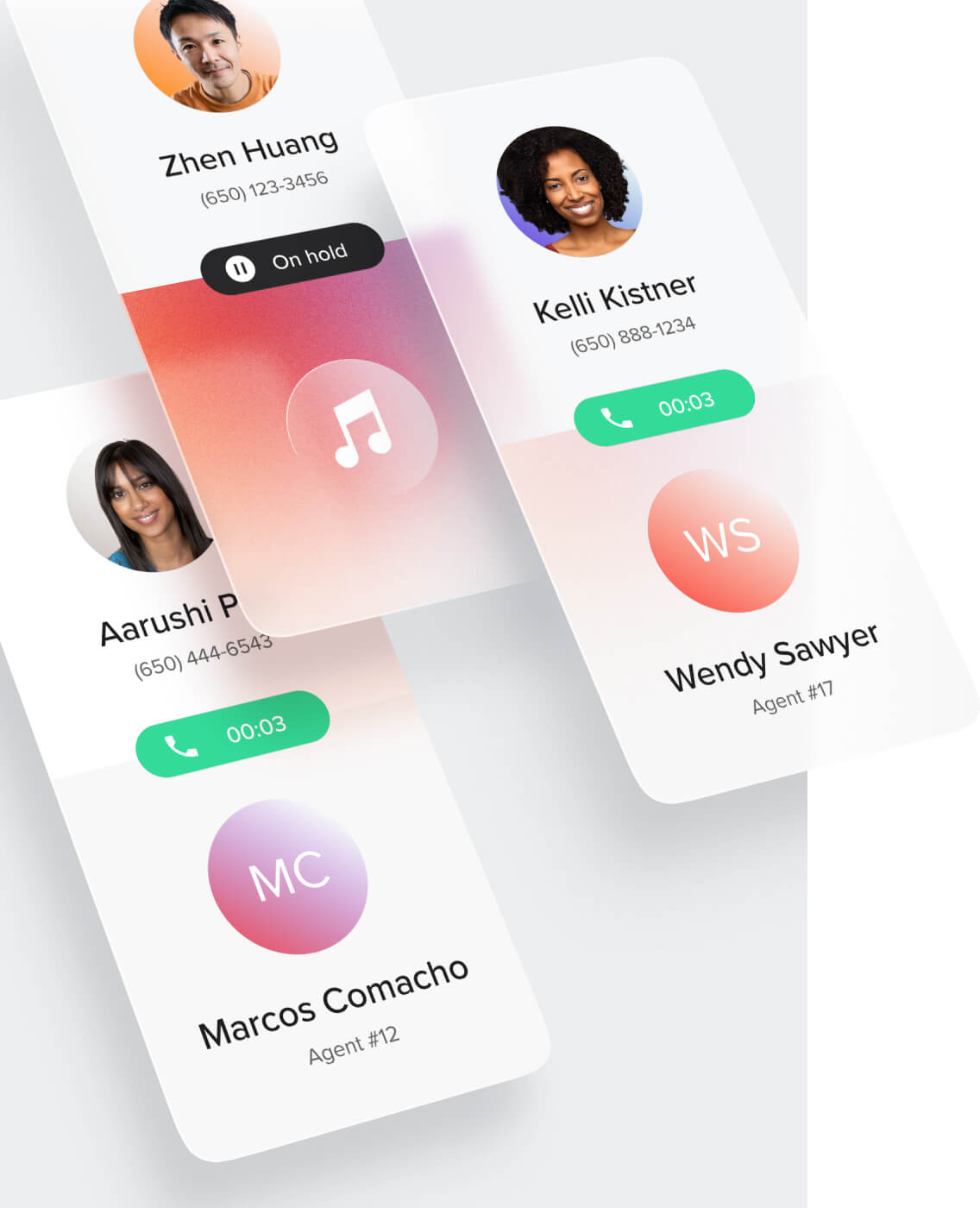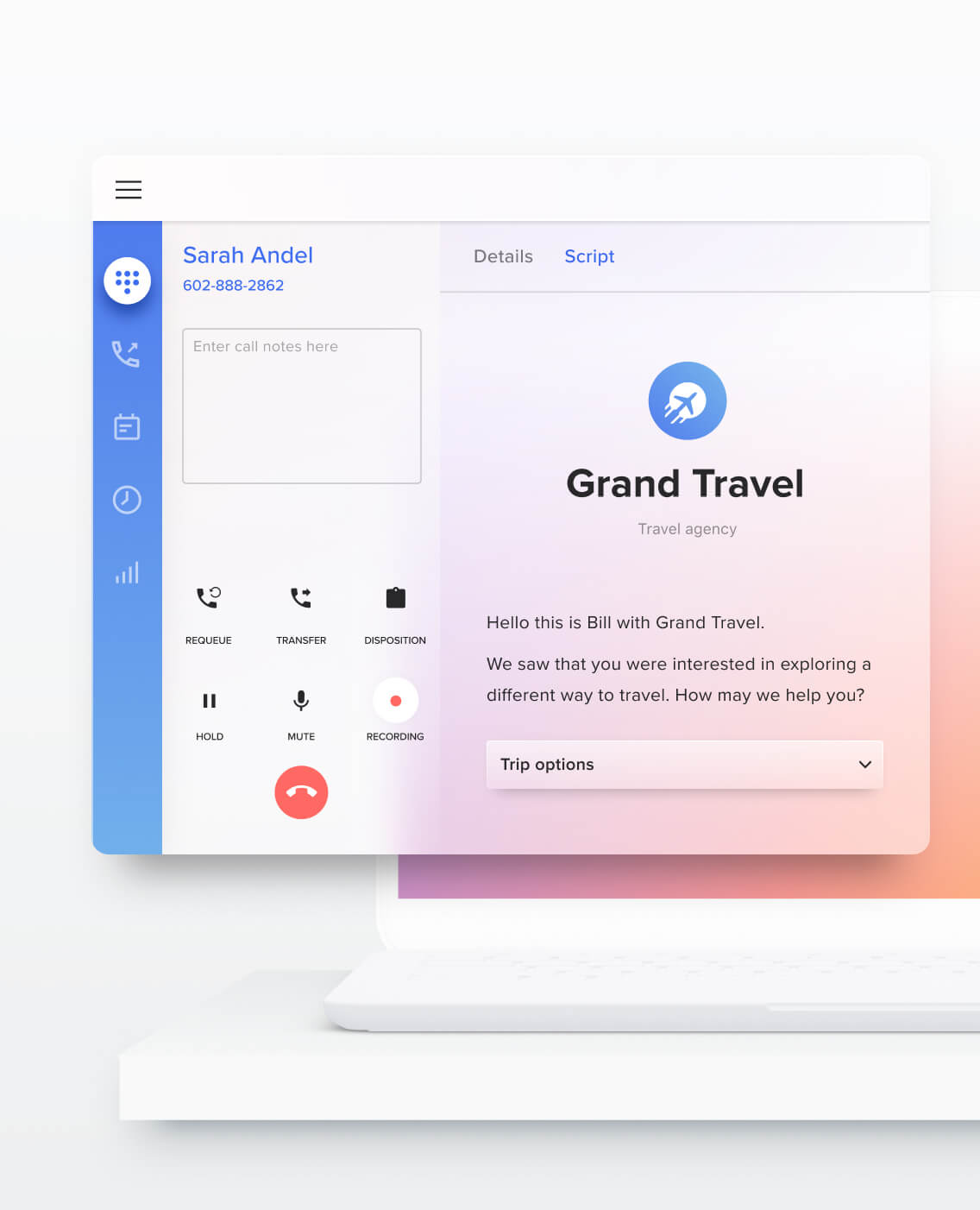
Customer service has a significant impact on the customer journey. No matter what company or product they’re using, customers expect support to be available at all times, on all channels.
At the frontline of customer contact, you need to provide great customer experiences to drive loyalty and revenue. It can be one of the key differences between someone giving you their business and going elsewhere.
In this post, we’ll take a look at exactly what a contact center does and how to improve your customer service. With good management and smart solutions, such as RingCentral, you’ll not only meet customer expectations but exceed them.

Contact centers vs call centers: what’s the difference?
Types of contact center
Hardware contact center
This is the traditional type, installed and hosted on physical servers within your premises. Because the whole system is in-house, you take full responsibility for setting up, maintaining, and updating it—and you’ll need your own security and disaster recovery protocols. It can prove expensive, but the advantage is that you’re in total control.
Outsourced contact center
An alternative is to outsource the operation, employing another organization to manage all your systems externally. This means you don’t have the costs of physical capacity, staffing, and IT maintenance—but you’ve got to choose a trustworthy partner company who’ll do the job right.
Cloud-based contact center
The cloud-based solution is a way to keep some control but minimize costs. In this case, you employ a cloud provider (such as RingCentral) to host your system on its internet server and take responsibility for its upkeep. You typically pay a regular fee to subscribe, and all your tools and data are accessible from anywhere via the internet.
Cloud-based contact centers often include advanced tools such as sales dialers, which enable outbound teams to manage high-volume campaigns, engage prospects efficiently, and work from any location with minimal setup.
Virtual contact center
Virtual contact centers don’t have a central location—reps work from home or various offices, connected by digital technology. The virtual call center model reduces overheads, boosts employee satisfaction, and enables worldwide recruitment. All that’s needed is a strong internet connection, the right software, and a desktop or mobile device with a headset.
How does a contact center operate?
Many businesses use contact center services to interact with their customers, including technology companies, financial services, healthcare, marketing teams, and political campaigns.
Some contact centers and call centers are inbound, responding to incoming calls or messages. This includes handling complaints, providing technical support, and accepting payments. Others are outbound, with agents making sales calls, chasing debts, or carrying out market research.
Most contact centers are either inbound or outbound, but some are a combination of both. As we mentioned already, they can be located within physical premises or use modern contact center technology to allow agents to work from anywhere.
Call center and contact center agents are professionals whose primary task is to keep customers satisfied. They require excellent problem-solving and communication skills and attention to detail, organization, and knowledge retention. A typical call center job includes:
- Answering inbound calls
- Interacting on digital channels
- Responding to support tickets
- Making outbound calls
- Logging calls and reporting issues.
While phone calling is still a popular way to communicate, a contact center agent is expected to handle chats on several digital channels simultaneously, often using a unified communications platform like RingCentral. This may include live chats, emails, text messages, and social media channels.
An inbound call center agent is responsible for a large number of customer inquiries each day. They aim to respond as quickly as possible and resolve the call center customer’s issue first-time. They must handle the pressure of high call volumes and deal calmly with angry customers.
Outbound customer service representatives are expected to place a specified number of calls per day. They should have the ability to offer sales and promotions without being pushy, recognize appropriate times to upsell or cross-sell, and not be disheartened when the customer isn’t interested.
Both inbound and outbound center agents may be required to make follow-up calls or interactions to check that a complaint has been resolved or offer aftercare services. It’s also crucial for contact centers to encourage customer feedback.
Outsourcing means your contact center handles customers from various companies. These third-party companies can prove more efficient—but the agents won’t be familiar with the brand's product or service.
Businesses use a range of call center software to enhance their operations, including automated tools and self-service options to avoid long call queues and management systems to streamline workflows. Contact center solutions like RingCentral also provide analytics such as real-time metrics.
General customer service is not always a highly paid role, but there are opportunities to earn more if you provide complex technical or multi-lingual support or handle sensitive information. Sales teams usually earn commission on conversions. Contact center agents also receive ongoing training and develop transferable skills.

Key features of a contact center
- Omnichannel communications
- Automation
- Collaboration tools
- Management systems
- Analytics
- Security protocols
Although customer support centers differ according to the nature of the organization, the typical contact center infrastructure is pretty similar. You’ll need the best agents, managers, hardware, and software to provide the best customer experiences.
A contact center must offer omnichannel customer communications so that customers can get in touch via the most convenient method. Agents should be proficient in every channel and be able to switch between them when necessary.
Smart communication tools also provide opportunities for team collaboration, which is critical for a harmonious environment—especially in virtual contact centers with a dispersed workforce. Agents can learn from each other and interact via video conferencing, file sharing, and instant messaging.
Many contact centers use a VoIP (voice over internet protocol) phone system that’s more flexible and affordable than traditional phone lines and integrates with other digital tools. Increasingly, contact centers use automation to reduce waiting times, with self-service options like chatbots and interactive voice response IVR.
They also employ tools like skills-based routing to divert calls to the most suitable agent, automatic call distribution (ACD) to reduce downtime, and predictive dialers to speed up an outbound call. As well as live agents, some centers use “virtual agents” powered by artificial intelligence.
A contact center needs workforce optimization tools to produce schedules, assign tasks, and assess how agents interact with customers. And analytics tools are crucial to measure and analyze everything from agent performance to customers’ experiences.
Security and reliability are also of the utmost importance. Contact centers can’t afford to have outages, and customers need to know that their data is fully protected. If you choose contact center software from a leading telecommunications company like RingCentral, these aspects are covered.
How can I improve my contact center?
A successful contact center brings a range of advantages to your business, including:
- Loyal customers
- Satisfied workers
- Improved productivity
- Reduced costs.
We’ve already talked about some of the major features a contact center needs, but here are some top tips to get it firing on all cylinders.
Better customer experiences
The main aim of your contact center is to improve customer retention by building customer engagement into every interaction. Managers and agents should always be attuned to the customer’s needs, demonstrating listening skills to understand customer stories.
Personalization is also essential, so ensure that every interaction is a custom call or message tailored to that customer’s preferences. For outbound call centers, solutions like RingCentral Engage Voice offer personalized scripting alongside productivity tools.
Contact center technologies cater to every channel of communication, but remember that some customers still prefer traditional voice calls. Either way, customers don’t like to wait, so it’s worth offering self-service options such as IVR systems to reduce wait times.
It’s helpful if call center agents can view previous customer interactions and information before and during a call to streamline the process and build customer relationships. You can do this by integrating your CRM software into the system.

Better employee experience
Working in a call center can be monotonous, not to mention stressful, due to high call volumes or frustrated customers. You can avoid staffing issues by creating a positive environment for employees, backed by communication and collaboration tools from RingCentral.
In some contact centers, agents take on a ‘blended’ role where they swap between inbound and outbound calls or between channels. As well as reducing downtime, agents find the wider variety of tasks less repetitive and more enjoyable.
A good contact center manager provides engaging training, supports, and checks in with agents to listen to their feedback. It helps with business continuity if everyone’s kept in the loop and agents recognize which queries to escalate to a colleague.
It’s also vital that a contact center provides agents (including remote teams) with the right equipment, including high-quality headsets, efficient and intuitive software, and comfortable furniture.
Better productivity
Happy workers are already more productive, but there are other ways to make your contact center more efficient. Automation tools such as ACD and power dialers speed up the workflow, while agents should have instant access to knowledge bases of product information and customer details.
Contact center managers should outline clear expectations, so your call center’s agents know how many interactions they must handle in a specific time and how to log and report calls accurately. Training for compliance and fraud prevention helps to protect customer data.
Workforce optimization tools (RingCentral has some great ones) can help you boost productivity with agent scheduling and workforce management, as well as monitoring, quality management, coaching, and gamification.
Better analysis
Busy call centers provide plenty of scope for data analysis, covering everything from how agents and customers interact to how an agent improves customer’s experiences. It’s important to measure as much as you can, analyze the results thoroughly and use them to make improvements.
Encourage employee feedback, ask your center’s customers to fill in surveys, and note contact center trends. Advanced analysis helps you set the right criteria for future interactions, ensure consistent evaluations, and boost investor relations by reporting to stakeholders.
You’ll need to use the best technology to get ahead of the competition. RingCentral offers call recording, live monitoring, and real-time analytics, with customizable reports to help you make timely decisions.

What’s the best contact center solution?
To develop your contact center and implement a digital transformation, you’ve got to choose the right solution. Cloud contact center platforms and unified communications are great ways to help you maximize efficiency, reduce costs, and delight customers.
When you subscribe to services hosted in the cloud by an expert provider like RingCentral, there’s no need to purchase or maintain office hardware. You only pay for what you need, making it an affordable and scalable solution—and it’s super-secure and reliable.
RingCentral also provides you with unified communications so that you can handle multiple channels in one place for ease of access and security. There’s no need to purchase lots of different apps, and there’s an uptick in productivity because agents don’t have to waste time toggling between them.
These solutions also make it easy to create a virtual contact center. But whether you use that model or base yourself on physical premises, the aim is the same: customer satisfaction. A successful contact center operation will make customers more likely to stick with you and become brand ambassadors for your business.